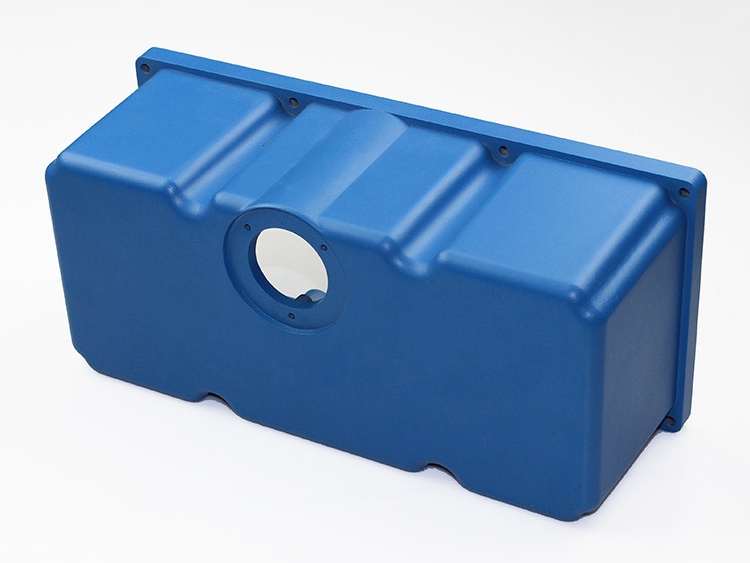Powder Coating for CNC Machined Parts: Durability Meets Aesthetics
Introduction
Powder coating is a high-quality finishing process extensively utilized for CNC machined components. It involves applying a uniform layer of powdered polymeric coating (typically 50–150 μm thick) electrostatically onto metal surfaces, followed by curing at temperatures of 150–200°C. This produces a durable, corrosion-resistant, and visually appealing finish, significantly improving component lifespan and reliability in diverse industrial settings.
Ideal for automotive, consumer electronics, and industrial equipment, powder coating seamlessly covers intricate CNC geometries, providing superior protection and enhanced aesthetics essential for precision-engineered products.
Powder Coating Technology: Superior Surface Protection and Visual Appeal
Scientific Principles & Industrial Standards
Definition: Powder coating is an electrostatic spray deposition process utilizing finely milled thermosetting or thermoplastic polymer powder. After application, the coated parts undergo heat curing, resulting in a uniform, tough, and visually appealing protective layer ranging from 50 to 150 µm thick.
Governing Standards:
ASTM D7803: Preparation of metallic substrates for powder coating
ISO 12944: Corrosion protection of steel structures by protective paint systems
ASTM D3451: Specification for powder coating systems
Process Function and Cases
Performance Dimension | Technical Parameters | Application Cases |
|---|---|---|
Corrosion Protection | - Salt spray test resistance: ≥2,000 hours (ASTM B117) - Chemical resistance: pH 2–12 stability | Automotive chassis, Outdoor lighting housings, Industrial equipment enclosures |
Mechanical Durability | - Adhesion strength: ≥5B rating (ASTM D3359) - Impact resistance: ≥160 in-lb (ASTM D2794) | Machinery casings, Bicycle frames, Agricultural equipment |
UV Stability & Weatherability | - UV resistance: ≥8 years outdoor exposure (ISO 2810) - Gloss retention: ≥80% after 5 years | Outdoor furniture, Architectural metalwork, Automotive exterior trims |
Aesthetic Flexibility | - Gloss levels: Matte to high gloss (10–90 GU) - Color consistency: ΔE <1.0 (ASTM D2244) | Consumer electronics, Home appliances, Decorative fixtures |
Powder Coating Process Classification
Technical Specification Matrix
Coating Type | Key Parameters & Metrics | Advantages | Limitations |
|---|---|---|---|
Epoxy Powder Coating | - Thickness: 50–100 µm - Curing Temp: 160–200°C - Corrosion Resistance: Excellent | - Superior chemical resistance - Excellent adhesion - Cost-effective | - Poor UV resistance - Unsuitable for outdoor exposure |
Polyester Powder Coating | - Thickness: 50–120 µm - Curing Temp: 150–190°C - UV Stability: Excellent | - Excellent outdoor durability - Good chemical resistance - Broad color options | - Moderate chemical resistance compared to epoxy |
Hybrid (Epoxy-Polyester) | - Thickness: 60–120 µm - Curing Temp: 160–190°C - Balanced performance | - Balanced chemical and UV resistance - Good cost-performance ratio | - Moderate outdoor durability |
Polyurethane Powder Coating | - Thickness: 60–100 µm - Curing Temp: 150–180°C - Abrasion Resistance: Excellent | - High durability - Excellent gloss retention - Superior weather resistance | - Higher cost - Requires precision application control |
Selection Criteria & Optimization Guidelines
Epoxy Powder Coating
Selection Criteria: Optimal for CNC components used in indoor or chemically aggressive environments needing high corrosion resistance and mechanical durability.
Optimization Guidelines:
Maintain curing temperature at 180°C±5°C to optimize chemical resistance
Ensure thorough substrate pretreatment for maximum adhesion
Avoid outdoor applications due to low UV stability
Polyester Powder Coating
Selection Criteria: Preferred choice for CNC components requiring excellent outdoor durability, color retention, and aesthetics.
Optimization Guidelines:
Apply pre-treatment with zinc phosphate for improved corrosion resistance
Control curing temperature (160–180°C) for best gloss and color consistency
Use multi-stage cleaning and drying processes to enhance adhesion quality
Hybrid (Epoxy-Polyester)
Selection Criteria: Ideal for indoor applications requiring balanced performance between corrosion resistance, aesthetics, and cost-efficiency.
Optimization Guidelines:
Monitor curing temperature precisely at 170–190°C
Optimize epoxy-polyester ratios based on specific corrosion and UV resistance needs
Use chemical pre-treatment to improve adhesion on CNC machined surfaces
Polyurethane Powder Coating
Selection Criteria: Suitable for high-performance CNC components where excellent abrasion resistance, superior aesthetics, and long-term outdoor durability are essential.
Optimization Guidelines:
Maintain precise coating thickness control (60–100 µm) to ensure uniformity
Utilize advanced spray application equipment for uniform surface finish
Conduct controlled curing at temperatures around 160–180°C for optimal results
Material-Coating Compatibility Chart
Substrate | Recommended Powder Coating | Performance Gain | Industrial Validation Data |
|---|---|---|---|
Polyester Powder Coating | +400% corrosion resistance | 2,500-hour salt spray test validation for automotive housings | |
Epoxy Powder Coating | Superior chemical resistance | Used extensively in industrial pump casings | |
Polyurethane Powder Coating | Excellent aesthetics & durability | Outdoor architectural components validated for 8+ years exposure | |
Hybrid Powder Coating | Enhanced decorative finish | Consumer electronics components passed strict aesthetic QC | |
Polyester Powder Coating | Long-term UV protection | 5-year exterior application tests on electronic cooling systems |
Powder Coating Process Control: Critical Steps & Standards
Pre-Treatment Essentials
Chemical Cleaning: Alkaline cleaning solution (pH 10–12), immersion at 60°C for 10 mins. Validation: Water-break test (ASTM F22).
Phosphating: Zinc phosphate coating (1–3 µm thickness). Validation: Coating weight (ISO 3892).
Drying: Hot-air drying at 120–140°C. Validation: Surface moisture <0.1% by weight.
Powder Coating Process Controls
Thickness Control: Automated electrostatic spraying systems, ±5% tolerance. Validation: Eddy-current thickness measurement.
Curing Temperature: Controlled convection ovens (±5°C accuracy). Validation: Real-time infrared sensors & data logging.
Post-Coating Enhancement
Quality Inspection: Adhesion cross-cut test (ASTM D3359). Validation: ≥5B rating.
Surface Finish Control: Gloss measurement (ISO 2813). Validation: Specified gloss levels maintained ±5 GU.
FAQs
How does powder coating compare to wet painting in terms of durability?
Can powder coating be effectively applied to threaded or intricate CNC components?
What's the typical lifespan of powder-coated CNC machined parts?
Is powder coating environmentally friendly compared to traditional painting methods?
Are powder-coated components FDA-approved for food and medical applications?

